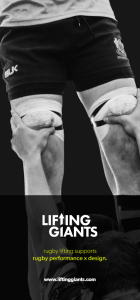 When Alain Rolland was introduced at the Millennium Stadium last weekend as the referee for the Wales v South Africa match he was met with a barrage of boos from Welsh fans. They were reminding the former Ireland scrum-half how vehemently they disagreed with his 2011 World Cup semi-final sending off of Sam Warburton for a tip-tackle on French winger Vincent Clerc.
When Alain Rolland was introduced at the Millennium Stadium last weekend as the referee for the Wales v South Africa match he was met with a barrage of boos from Welsh fans. They were reminding the former Ireland scrum-half how vehemently they disagreed with his 2011 World Cup semi-final sending off of Sam Warburton for a tip-tackle on French winger Vincent Clerc.
Rolland has never shied away from taking centre stage as a match official, and his decision to red card the Wales captain, leaving them a man down with only 17 minutes played, almost certainly cost Warburton and his team a place in the World Cup final.
Rolland was a stickler for the letter of the law on that occasion, no doubt spurred on by the tournament reminder sent out by the then head of IRB referees, Paddy O’Brien, to come down hard on not just spear-tackles, but anything that saw the legs of the ball-carrier raised above the midriff. He punished Warburton’s non spear-tackle – in which he released Clerc rather than driving him into the turf – with a rigidity that turned what was a yellow card offence into a sending off.
Yet, when it comes to the scrum, Rolland is much more free and easy with the letter of the law. That is the only conclusion you can come to after his refereeing in Cardiff, which, in terms of applying the new scrum directives, was more tour de farce than tour de force.
The farcical element included Rolland being unable to detect which props were responsible for the collapsing that blighted the early scrum engagements, going for the eeny-meeny-miney-mo option of giving alternate penalties.
Add to that allowing four blatantly crooked put-ins, as well as deciding that foot-up was not worthy of his attention, and you have the impression of a referee either unwilling, or lacking the know-how, to apply the scrum laws.
To make matters worse, having failed to nip the collapsing in the bud, the scrum battle between the Welsh and Springbok packs disintegrated, and Rolland’s judgement with it.
 The nadir came in the second-half when he reduced the Test to Sunday pub rugby level by sin-binning a prop from either side, with South Africa’s replacement tight-head Coenie Oosthuizen being yellow-carded alongside Gethin Jenkins for collapsing, despite having been on the pitch for only a single scrum.
The nadir came in the second-half when he reduced the Test to Sunday pub rugby level by sin-binning a prop from either side, with South Africa’s replacement tight-head Coenie Oosthuizen being yellow-carded alongside Gethin Jenkins for collapsing, despite having been on the pitch for only a single scrum.
It ushered in uncontested scrums for the period they were on the sidelines.
This was an alarming development given that all the IRB’s international panel referees were present at a workshop at Marcoussis, the French national teams training ground, in August to enable them to have a clear understanding of the new ‘crouch-bind-set’ engagement. This included unequivocal directives to make sure the ball was put-in straight down the middle of the tunnel, and that the scrum was square and stable before the put-in – i.e. no rolling hit on engagement.
Rolland’s expertise was not tested until the 20th minute, when we had the first scrum. First he fussed over the sequence, and then down it went, with Jenkins hinging and then collapsing, and Frans Malherbe, the debutant Springbok tight-head, following the 99-cap Welsh loose-head to the deck. When the scrum was reset and it happened all over again – the whole mess taking almost two minutes – Rolland penalised South Africa.
Was the referee properly prepared? Had he done his homework to find out how many collapsed scrums there were in Tests involving South Africa in the Southern Hemisphere Rugby Championship.
Even more specifically, did he know what percentage of scrums have gone to ground in games (club and international) under the new laws when Jenkins or Malherbe, or any other Welsh or Springbok props, engage?
It is essential that referees access detail of that sort because deliberate collapsing is not only an eyesore, it is potentially dangerous – and the frequency with which it happens when particular props are on the pitch is powerful circumstantial evidence against them. It is also as much of a deliberate infringement as coming round on the wrong side of a ruck and killing the ball, and it should incur sanctions, albeit not in the arbitrary manner Rolland used towards Oosthuizen and Jenkins.
Last weekend there were four autumn Tests. In two of them – France v New Zealand, and England v Argentina – the scrums generally stayed up and were a platform to play from. In the other two, Wales v South Africa, and Italy v Australia, they were either a constantly collapsing lottery, or, in Cardiff, completed after squint put-ins. Having seen the Springbok scrum used frequently as an attacking launch-pad during the Rugby Championship, including impressive back-row moves, my hunch is that Wales were more sinners than sinned against.
However, a professional IRB international panel referee, earning upwards of £75,000 a year, should rely on scrum research and solid information rather than hunches, or guess-work, which is what Rolland appeared to be doing.
Where Rolland’s performance in South Africa’s win over Wales should demand zero tolerance is in his failure to police crooked put-ins. For an experienced referee to allow four of them, as he did, is a clear rejection of the new scrummaging directives, and therefore tacit support for the old ‘hit’ scrummage, and the scourge of collapsed scrums it promoted (45 per cent).
It alone should be sufficient for Rolland to be dropped as an IRB panel referee until he, and other officials of his ilk, accept it is not their remit to decide which laws they apply. It may seem draconian, but there is too much at stake – and just as no player is bigger than the game, no referee is either.

1 Comment
You must be logged in to post a comment Login
Leave a Reply
Cancel reply
Leave a Reply
You must be logged in to post a comment.

United Rugby Championship
Vaea Fifita’s commanding presence has Scarlets pushing for URC play-off spot

British and Irish Lions
British and Irish Lions Watch: Caelan Doris confirmed to miss the tour with injury


























stuart
21 November 2013 at 6:10 PM
Can’t agree with you that it wasn’t a red card. If you lift a player you have a duty to return the player to the ground safely. You can’t do that if you drop them. Don’t believe you can only give a yellow as it’s 17 mins in.
As Far as his performance in the Wales SA game – nobody has been calling crooked feeds just as so few line outs get called not straight when a fair few are. Not spotting hinging is worse as that is a problem that can causing injuries.
Scrumming is getting much better at the highest levels of the game even feeds have gotten better than they were